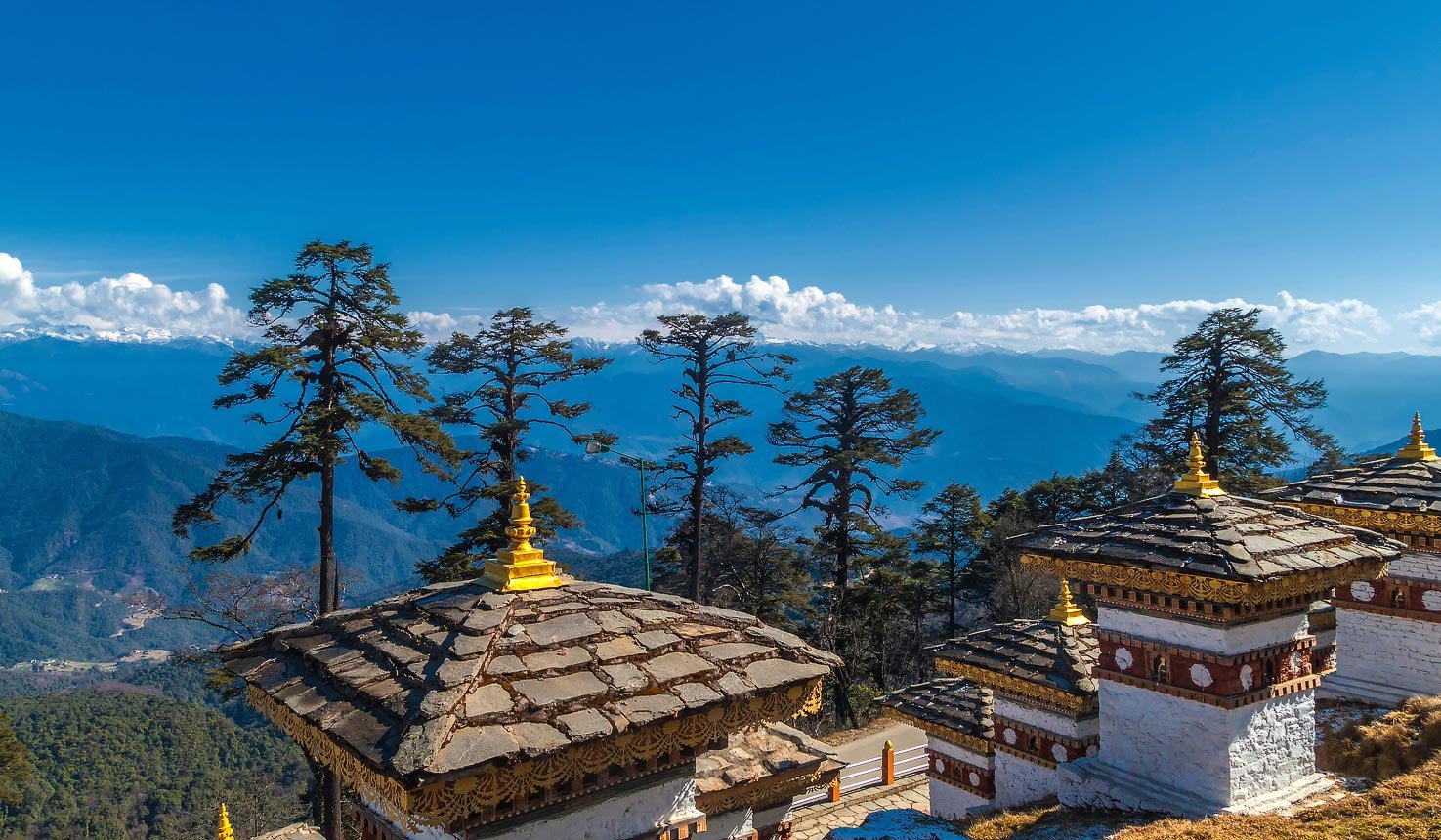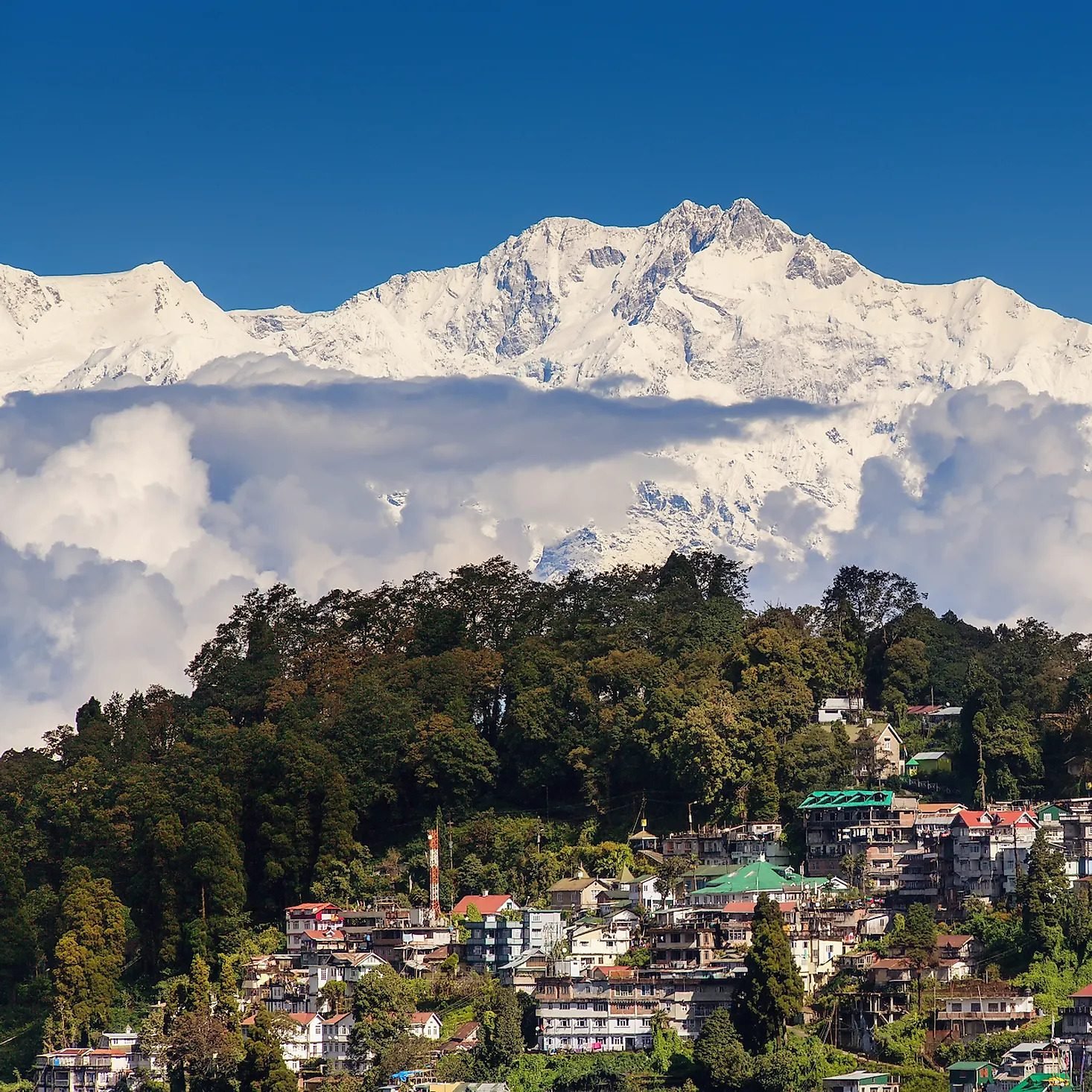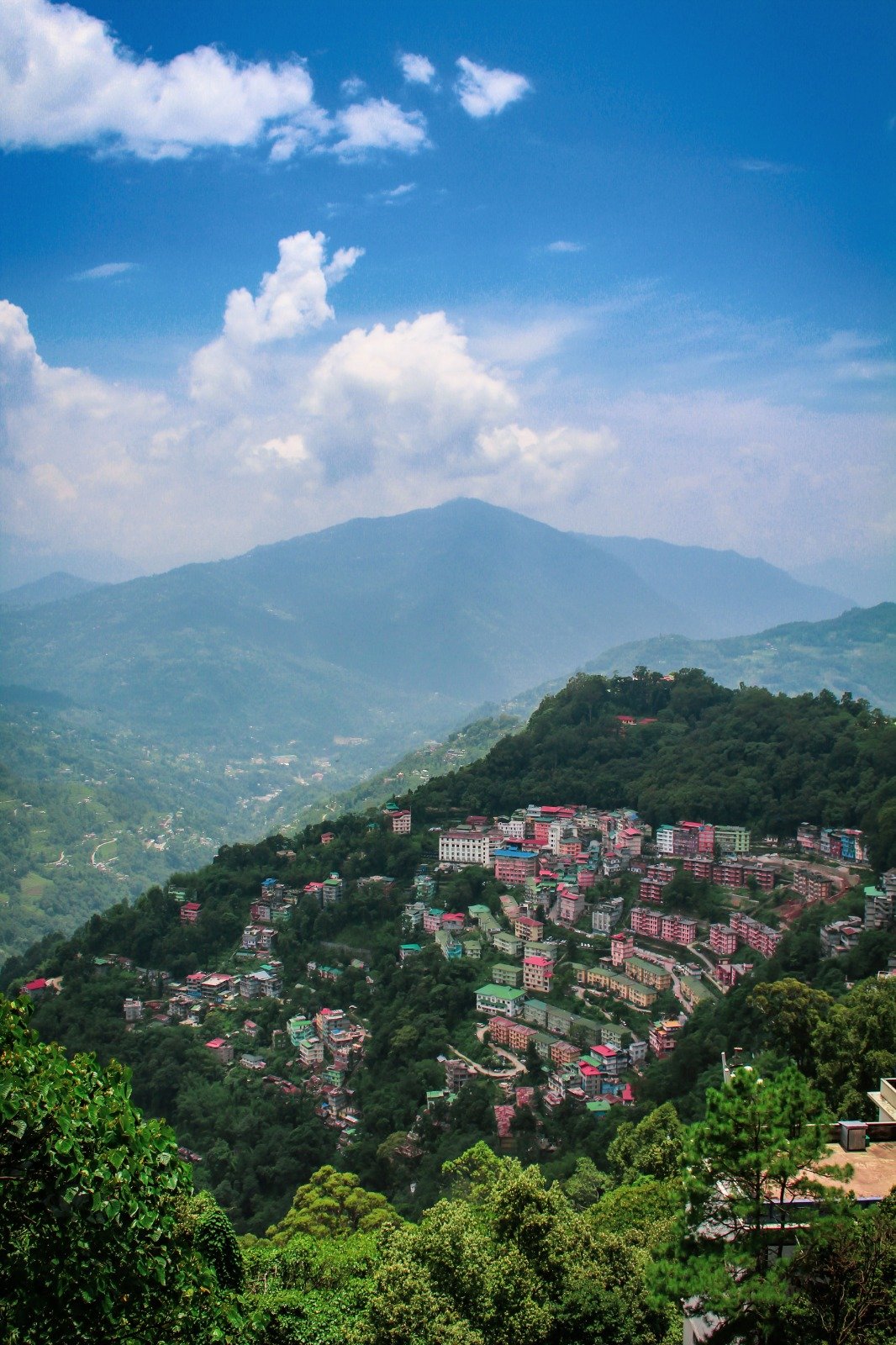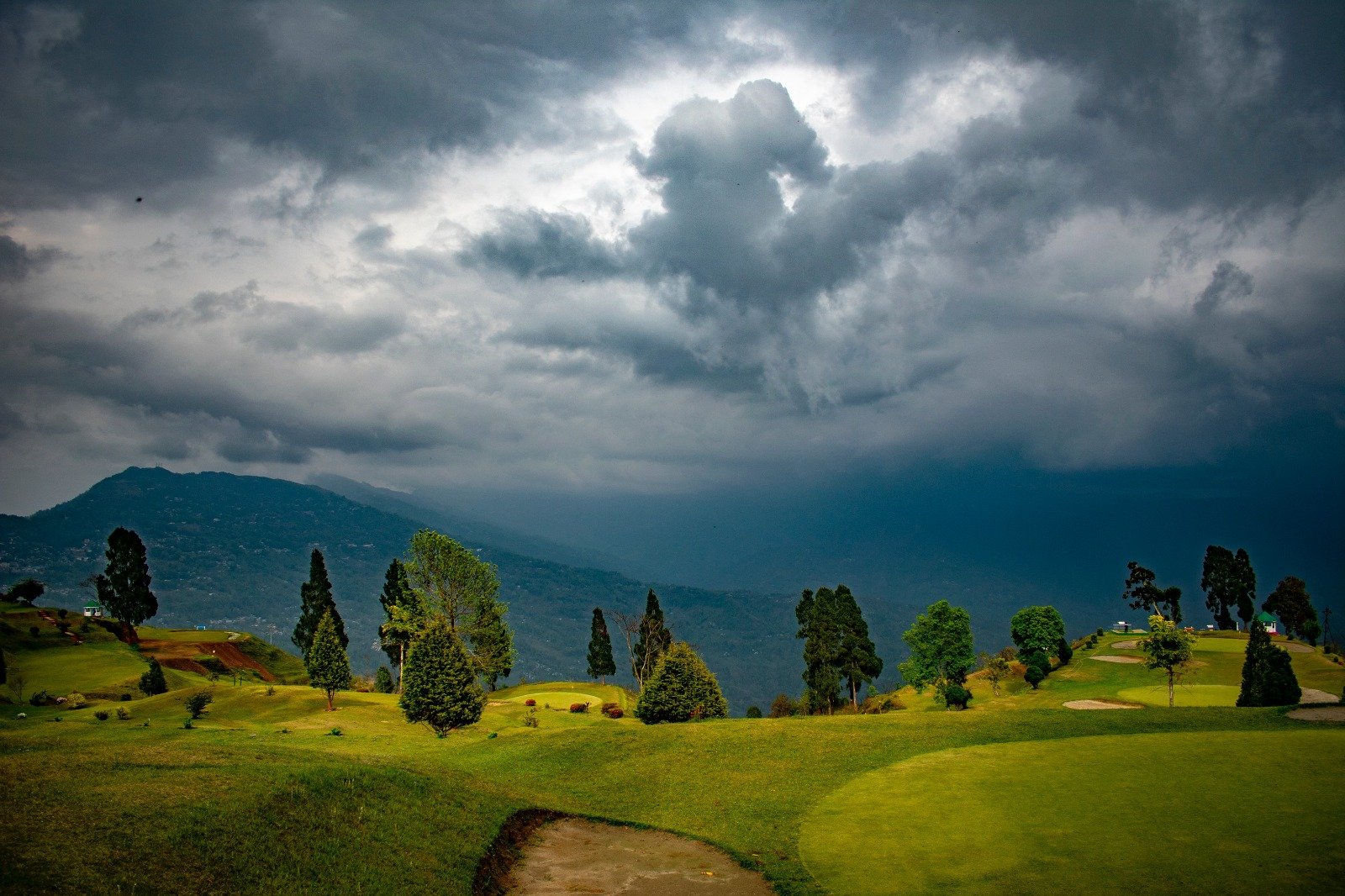Around sixty million years ago, what is today called peninsular India was a separate land-mass drifting northwest across the ocean towards Central Asia. Geologists believe this mass originally broke off from the African continent along a fault line. This line is still discernible today as the north–south ridge of volcanic mountains, known as the Western Ghats, which stretch 1400km down the west coast of India. Rising to a height of around 2500m, it is India’s second highest mountain chain after the Himalayas. Forming a natural barrier between the Tamil plains and coastal Kerala and Karnataka, the Ghats (literally “steps”) soak up the bulk of the southwest monsoon, which drains east to the Bay of Bengal via the mighty Kaveri and Krishna river systems. The massive amount of rain that falls here between June and October (around 2.5m) allows for an incredible biodiversity. Nearly one third of all of India’s flowering plants can be found in the dense evergreen and mixed deciduous forests cloaking the Ghats, while the woodland undergrowth supports the Subcontinent’s richest array of wildlife.
PLACES TO VISIT IN THIS REGION
It was this abundance of game, and the cooler temperatures of the range’s high valleys and grasslands, that attracted the British away from the withering summer heat on the southern plains. The best known of the hill resorts is Udhagamandalam (formerly Ootacamund, and known just as “Ooty”) nestling in the Nilgiris (from nila-giri, “blue mountains”). The ride up to Ooty on the miniature railway via Coonoor is fun, and the views breathtaking, but the town centre suffers from heavy traffic pollution and actually has little to offer. Further south and reached by a scenic switchback road, the other main hill station is Kodaikanal. The lovely walks around town provide views and fresh air in abundance, while the bustle of Indian tourists around the lake makes a pleasant change from life in the city. The forest areas lining the state border harbour Tamil Nadu’s principal wildlife sanctuaries, Indira Gandhi and Mudumalai, which comprise part of the vast Nilgiri Biosphere Reserve, the country’s most extensive tract of protected forest.
Kodaikanal
Perched on top of the Palani range, around 120km northwest of Madurai, Kodaikanal, also known as Kodai, owes its perennial popularity to its hilltop position which, at an altitude of 2133m, affords breathtaking views over the blue-green reaches of the Vaigai plain. Raj-era bungalows and flower-filled gardens add atmosphere, while short walks out of the centre lead to rocky outcrops, waterfalls and dense shola forest. With the more northerly wildlife sanctuaries and forest areas of the Ghats closed to visitors, Kodai’s outstandingly scenic hinterland also offers south India’s best trekking terrain.
After a while in the south Indian plains, a retreat to Kodai’s cool heights is more than welcome. However, in the height of summer (April–July) when temperatures compete with those in the lowlands, it’s not worth the trip – nor is it a good idea to come during the monsoon (Oct–Dec), when the town is shrouded in mist and prone to heavy downpours. From January to early March the nights are chilly so the peak tourist season runs from April to June, when prices soar.
Indira Gandhi (Anamalai) Wildlife Sanctuary
Indira Gandhi (Anamalai) Wildlife Sanctuary is a 958-square-kilometre tract of forest on the southern reaches of the Cardamom Hills, 37km southwest of the busy junction town of Pollachi. Vegetation ranges from shola-grassland to dry deciduous to tropical evergreen, and the sanctuary is home to lion-tailed macaques (black-maned monkeys), gaur, sambar, spotted and barking deer, sloth bear, as well as leopards and tigers. Birds such as hornbills and frogmouths are also seen here. It is possible to trek through the giant creaking stands of bamboo with a guide and the Forestry Department also runs safari tours by minibus and elephant safaris. For reservations, contact the park reception office.
Coonoor
At an altitude of 1858m, Coonoor, a scruffy bazaar and tea-planters’ town on the Nilgiri Blue Mountain Railway lies at the head of the Hulikal ravine, on the southeastern side of the Dodabetta mountains, 27km north of Mettupalayam and 19km south of Ooty. Thanks to its proximity to its more famous neighbour, Coonoor has avoided Ooty’s over commercialization, and can make a pleasant place for a short stop.
Coonoor consists of two “levels”, Lower Coonoor, with its small but atmospheric hill market, which specializes in leaf tea and fragrant essential oils and Upper Coonoor, with its old Raj-era bungalows and narrow lanes with flower-filled hedgerows. At the top lies Sim’s Park, a lush botanical garden on the slopes of a ravine with hundreds of rose varieties.
Around the town, rolling hills and valleys carpeted with spongy green tea bushes and stands of eucalyptus and silver oak offer some of the most beautiful scenery in the Nilgiris, immortalized in many a Hindi-movie dance sequence. Cinema fans from across the south flock here to visit key locations from their favourite blockbusters, among them Lamb’s Nose (5km) and Dolphin’s Nose (9km), former British picnicking spots with paved pathways and dramatic views of the Mettupalayam plains. If you take an early morning bus to Dolphin’s Nose, it’s possible to walk the 9km back into town via Lamb’s Nose – a very pleasant scenic amble that takes you through tea estates and dense forest.
Coonoor’s tea estates
Visible from far away as tiny orange or red dots amid the green vegetation, tea-pickers work the slopes around Coonoor, carrying wicker baskets of fresh leaves and bamboo rods that they use like rulers to ensure that each plant is evenly plucked. Once the leaves reach the factory, they’re processed within a day, producing seven grades of tea. Orange pekoe is the best and most expensive; the seventh-lowest grade, a dry dust of stalks and leaf swept up at the end of the process, will be sold on to make instant tea. To visit a tea or coffee plantation, contact UPASI (United Planters’Association of Southern India) at Glenview House, Coonoor, just along from Vivek Tourist Home. Or you can go directly to one such as High Field Estate, less than 2km past Sim’s Park; it also has a fine shop.
Udhagamandalam (Ooty)
In the early nineteenth century, when the British burra sahib John Sullivan first ventured into this region of the Nilgiris through the Hulikal ravine and “discovered” Udhagamandalam (anglicized to Ootacamund, abbreviated to Ooty), the territory was the traditional homeland of the pastoralist Toda hill tribe. Until this moment, the Todas had lived in almost total isolation from the cities of the surrounding plains and Deccan plateau lands. Sullivan quickly realized the agricultural potential of the area, acquired tracts of land for Re1 per acre from the Todas, and set about planting flax, barley and hemp, as well as potatoes, soft fruit and, most significantly, tea, all of which flourished in the mild climate. Within twenty years, the former East India Company clerk had made a fortune. Needless to say, he was soon joined by other fortune-seekers, and a town was built, complete with artificial lake, churches and stone houses that wouldn’t have looked out of place in Surrey or the Scottish Highlands. Ooty was the “Queen of Hill Stations” and the most popular hill retreat in India outside the Himalayas.
By a stroke of delicious irony, the Todas outlived the colonists whose cash crops originally displaced them – but only just. Having retreated with their buffalo into the surrounding hills and wooded valleys, they continue to preserve a more-or-less traditional way of life, albeit in greatly diminished numbers. Until the mid-1970s “Snooty Ooty” continued to be “home” to the notoriously snobbish British inhabitants who chose to “stay on” after Independence. Since then, visitors have continued to be attracted by Ooty’s cool climate and peaceful green hills, forest and grassland. However, indiscriminate development and a deluge of domestic holiday-makers, means that the quaint vestiges of the Raj have been somewhat diluted and are now few and far between.
The Nilgiri Blue Mountain Railway
The famous narrow-gauge Nilgiri Blue Mountain Railway climbs up from Mettupalayam on the plains, via Hillgrove (17km) and Coonoor (27km) to Udhagamandalam, a journey of 46km that passes through sixteen tunnels, eleven stations and nineteen bridges. It’s a slow haul of four and a half hours or more – sometimes the train moves little faster than walking pace, and always takes at least twice as long as the bus – but the views are absolutely magnificent, especially along the steepest sections in the Hulikal ravine.
The line was built between 1890 and 1908, paid for by the tea-planters and other British inhabitants of the Nilgiris. It differs from India’s two comparable narrow-gauge lines, to Darjeeling and Shimla, for its use of the so-called Swiss rack system, by means of which the tiny locomotives are able to climb gradients of up to 1 in 12.5. Special bars were set between the track rails to form a ladder, which cogs of teeth, connected to the train’s driving wheels, engage like a zip mechanism. Because of this novel design, only the original locomotives can still run the steepest stretches of line, which is why the section between Mettupalayam and Coonoor has remained one of South Asia’s last functioning steam routes. The chuffing and whistle screeches of the tiny train, echoing across the valleys as it pushes its blue-and-cream carriages up to Coonoor (where a diesel locomotive takes over) rank among the most romantic sounds of south India, conjuring up the determined gentility of the Raj era. Even if you don’t count yourself as a trainspotter, a boneshaking ride on the Blue Mountain Railway should be a priority.
Mudumalai Tiger Reserve
Set 1140m up in the Nilgiri Hills, the Mudumalai Tiger Reserve covers 322 square kilometres of deciduous forest, split by the main road from Ooty (64km to the southeast) to Mysore (97km to the northwest). Occupying the thickly wooded, lower northern reaches of the hills, it boasts one of the largest populations of elephants in India, along with wild dogs, gaur (Indian bison), common and Nilgiri langurs and bonnet macaques (monkeys), jackals, hyenas, sloth bears and even a few tigers and leopards. The abundant local flora includes the dazzling red flowers of the Flame of the Forest.
The main focus of interest by the park entrance at Theppakkadu is the Elephant Camp show, where you can watch the sanctuary’s elephants being fed and bathed. This is also the starting point for the government safari tour, either on elephant back (which we do not recommend, due to the negative impact this has on the animals) or by vehicle, which is the only way of accessing the official park limits. It is worth noting that the nearby Nagarhole and Bandipur parks are much cheaper, with the same price for both Indians and tourists.




